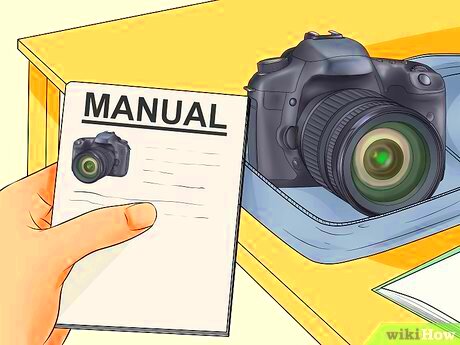Are you a photographer looking to earn from your work? Selling images to magazines can be a great opportunity. Magazines constantly need high-quality, eye-catching photos for their articles, features, and advertisements. If you've ever wondered how you can turn your photos into a profitable venture, this is your chance to learn how to break into the market.
This blog will guide you through the essential steps, including why magazines buy images, what they look for, and how to get your photos noticed. Whether you're an amateur photographer or a seasoned professional, understanding the process will help you get the most from your work and give you the best chance to succeed in this competitive field.
Why Magazines Buy Photos

Magazines are always on the lookout for images that bring their stories and layouts to life. Here are some reasons why magazines rely on photographers:
- Visual Appeal: A striking image can grab a reader’s attention and make them want to engage with the content.
- Storytelling: Photos help magazines tell stories in a more impactful and emotional way, whether it's an interview, feature, or news story.
- Advertisements: Many magazines need high-quality images for ads, and they often purchase exclusive rights to use a photographer's images for specific campaigns.
- Illustrating Articles: Some articles require specific photos that align with their theme, such as travel, food, fashion, or lifestyle.
In short, magazines buy photos because they enhance the content, attract readers, and help them build their brand's identity. If your work fits these needs, magazines could be your perfect market.
Also Read This: How to Edit Image File in PDF
Understanding Magazine Image Requirements
Before you submit your photos to a magazine, it's essential to know what they're looking for. Each publication may have different requirements, but there are general guidelines that most magazines follow when choosing images:
- High Quality: Magazines need images that are sharp, clear, and professionally shot. Low-quality images won't cut it.
- Resolution: Make sure your images have a high resolution (usually 300 DPI for print). This ensures they look crisp and professional in print formats.
- Relevant Content: Photos should align with the magazine’s theme. For example, a fashion magazine might be interested in images that showcase the latest trends or a food magazine in images of culinary delights.
- Originality: Magazines often prefer unique or exclusive images that haven’t been widely distributed. Original photos stand out more to editors.
- Legal Rights: Magazines need to know they can use your photos without legal issues. Make sure you have model releases for people in the shots and any necessary property releases if applicable.
Understanding these basic requirements helps you tailor your submissions and increase your chances of success when selling your photos to magazines.
Also Read This: How Can I Edit a JPEG Image to Improve Quality and Composition
How to Find Magazines Interested in Your Work
Finding the right magazines that are interested in your photos is a crucial step. Not all magazines will be a perfect fit for your style or photography niche, so it’s important to research and target the right publications. Here are some tips to help you find magazines that are more likely to purchase your images:
- Identify Your Niche: Start by identifying the types of photography you specialize in, such as fashion, nature, food, or travel. Once you know your niche, look for magazines that focus on those areas.
- Research Magazines: Look through magazines at your local library, bookstore, or online. Check out their content, layout, and the kind of images they use. This will give you a clear idea of whether your work fits.
- Check Submission Guidelines: Many magazines have submission guidelines on their websites. These will give you a better idea of what kind of work they accept and how to send it. Pay close attention to details like image size, format, and the type of content they’re interested in.
- Use Online Marketplaces: Websites like Shutterstock, Getty Images, or Adobe Stock allow you to submit photos that might catch the attention of editors from various magazines.
- Network with Editors: Building connections with editors or photography coordinators can increase your chances of getting your work in magazines. Attend photography events or reach out through social media to build relationships.
By following these steps, you'll be able to find magazines that align with your style and increase your chances of getting published.
Also Read This: How to Upload Spark Projects to Behance for Creative Showcase
Best Practices for Submitting Photos to Magazines
Submitting photos to magazines can be competitive, so it’s essential to follow best practices to ensure your photos stand out. Here’s how you can improve your chances of a successful submission:
- Follow Submission Guidelines: Always check the magazine’s submission guidelines before submitting. Magazines typically provide details on file formats, image sizes, and how to submit your work (email, online form, etc.).
- Submit High-Quality Images: Ensure your images are sharp, well-composed, and edited professionally. Magazines are looking for photos that match their editorial style and meet high-quality standards.
- Provide a Portfolio: Include a small selection of your best work. Magazines may prefer a concise portfolio that showcases your skills rather than overwhelming them with too many images.
- Write a Brief, Professional Email: When submitting, make sure your email is polite and professional. Include a brief introduction of who you are, why you’re submitting your photos, and any relevant information about your work.
- Label Your Files Properly: Name your image files professionally. This might include your name or the title of the shot, along with the date. This will make it easier for editors to keep track of your work.
- Be Patient and Follow Up: It can take time for magazines to respond to submissions. If you haven’t heard back in a few weeks, it's okay to send a polite follow-up email.
By following these best practices, you’ll ensure your submission looks professional and stands a higher chance of being accepted.
Also Read This: How to Integrate Adobe Stock into Adobe XD
How Much Can You Earn by Selling Photos to Magazines?
The amount you can earn by selling photos to magazines depends on several factors, including the publication, the type of photo, and the rights you offer. Let’s take a look at the factors that influence how much you could earn:
- Image Usage Rights: You can earn more by selling exclusive rights, which means the magazine gets sole ownership and can use the photo without competition. Selling non-exclusive rights usually results in a lower price but can allow you to sell the same image to multiple publications.
- Size and Placement: Photos used in prominent spots, like the cover or in high-profile articles, tend to pay more than images used in smaller features or ads.
- Magazine Circulation: Magazines with a larger circulation or higher readership typically pay more for images due to the wider exposure your work will receive.
- Freelance or Agency Submission: If you submit your work through a photo agency, they typically take a percentage (often around 50%) of the sale. However, submitting directly to magazines might earn you more per photo, but you’ll need to handle the negotiation and contracts yourself.
Here’s a general idea of what you might earn:
| Type of Usage | Potential Earnings |
|---|---|
| Cover Photo | $500 - $1,500 |
| Feature Article Photo | $150 - $500 |
| Small Ad or Editorial | $50 - $200 |
As you gain experience and build a portfolio, you’ll be able to command higher prices. Keep in mind that it might take time to establish yourself and find consistent work, but the potential earnings can be significant over time.
Also Read This: How to Embed Getty Images on Twitter
Common Challenges in Selling Images to Magazines
While selling images to magazines can be rewarding, it's not without its challenges. Many photographers face obstacles when trying to get their photos published, but understanding these challenges can help you navigate the process more effectively. Let’s take a look at some of the most common hurdles photographers encounter:
- High Competition: The market for magazine photography is competitive. Thousands of photographers submit their work to the same magazines, which means your photos need to stand out.
- Rejection: Even the most talented photographers face rejection. Magazines might not select your photos simply because they don't fit the current theme, or because they already have similar images in their archive.
- Finding the Right Fit: Not every magazine will be interested in your style or niche. It takes time to identify the right publications that align with your photography.
- Copyright and Licensing Issues: Understanding the legalities of copyright and licensing can be tricky. Magazines may want exclusive rights, and negotiating these terms requires careful attention to detail to avoid future conflicts.
- Payment Delays: Magazine publishers may take time to process payments, especially if you’re working with an agency. This can cause cash flow issues for photographers relying on timely compensation.
Despite these challenges, persistence is key. Overcoming these obstacles will improve your chances of success in the magazine market. Keep honing your skills, and don’t be discouraged by setbacks.
Also Read This: How to Credit Enhanced License Adobe Stock Graphics
FAQ about Selling Images to Magazines
If you’re considering selling your images to magazines, you probably have a few questions. Here are some common questions photographers ask about the process:
- How do I protect my photos? It’s important to watermark your photos or submit them with a low-resolution version to protect your work. You can also negotiate usage terms to maintain control over how your images are used.
- Do I need a license to sell my images? Yes, magazines typically require a photo license to use your images. This license will outline how the image can be used (e.g., for a cover or feature), and whether the rights are exclusive or non-exclusive.
- Can I sell the same image to multiple magazines? If you sell non-exclusive rights to your image, you can submit it to multiple publications. However, selling exclusive rights means only one magazine can use that image.
- How long does it take to get paid? Payment timelines vary depending on the magazine or agency. Typically, payments can take anywhere from 30 to 90 days after the photo is published or accepted.
- Do I need to be a professional photographer? No, you don’t need to be a professional, but your images should meet the quality standards set by the magazine. If you are just starting, focus on building a strong portfolio and learning the industry’s standards.
These answers should help clarify the process of selling images to magazines and assist you in preparing for a successful submission.
Conclusion
Selling your images to magazines can be a great way to turn your photography into a profitable career. While the journey may have its challenges, understanding the process and knowing what magazines are looking for will help you get your photos into the hands of editors. From researching the right publications to submitting high-quality work, following the best practices will increase your chances of success.
Remember, persistence is important in this field. Keep submitting your work, learn from any rejections, and continue refining your photography skills. Over time, your hard work will pay off, and you’ll start seeing your images in magazines, earning recognition and income.

 admin
admin








